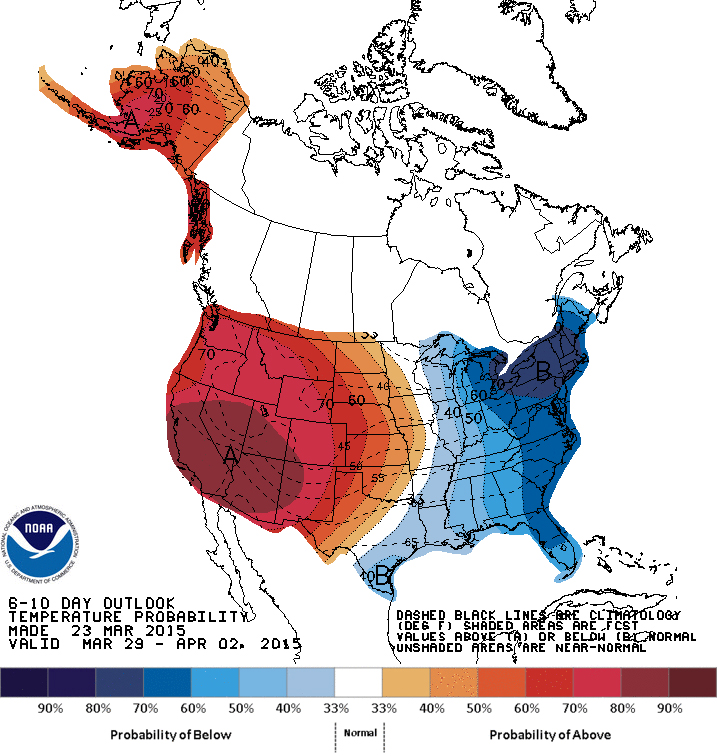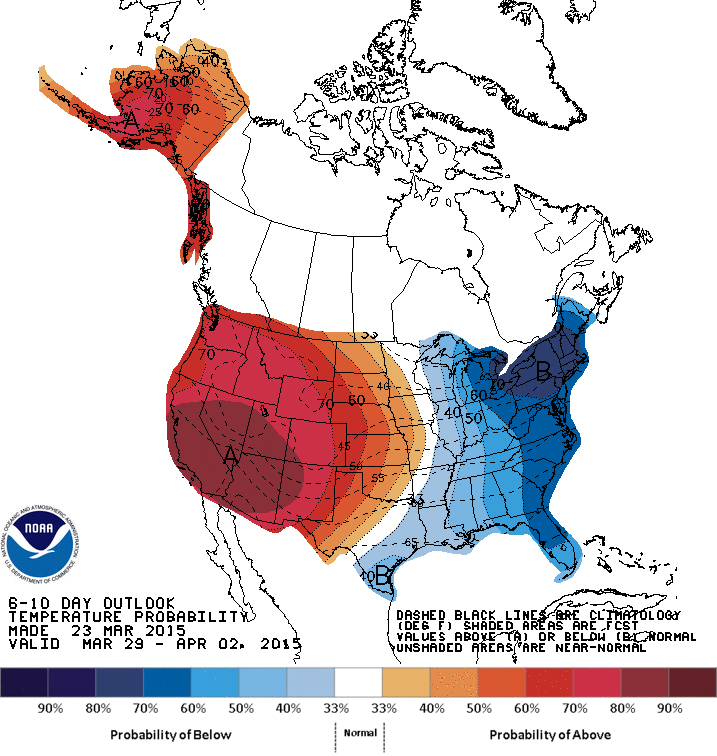Even though we’re past the average date for last frost in parts of the Southeast, it is still possible for a cold blast to move through the area.
Early signs for this weekend, Saturday March 28 and Sunday March 29, show that another surge of cold air is expected to move into the area, following a pair of cold fronts on Thursday and Friday.
Temperatures in northern Georgia and Alabama as far south as Birmingham and Atlanta could be reach 32 degrees Farenheit on Saturday morning, and even colder temperatures could be seen on Sunday morning, with freezing temperatures as far south as Albany or possibly even farther south.
If you have plants at a stage sensitive to frost, you are going to want to watch the forecast carefully. A hard frost at this time of year, especially after a warm spell, could cause significant damage to agriculture crops and garden and ornamental plants.
While farmers may have frost protection plans laid out well in advance, many home gardeners may be caught off guard by a late cold snap, said Paul Thomas, a UGA Extension horticulturist.
Since it's difficult to predict when a frosty night might hit, gardeners should have a frost tool kit and game plan ready. “Buying or collecting frost reduction materials prior to the frost and pre-positioning them close to the plants you want to protect is very important,” Thomas said.
One of the most effective ways to shield plants from frost is to cover them with any of a wide variety of materials, from high quality frost–reduction fabric, to blankets and sheets, newspapers, baskets or straw.
For small shrubs such as Gardenia, a supply of old comforters or heavy blankets — maybe purchased from a local thrift store — will allow you to protect your plants from that first frost without spending much money. Covering plants with a heavier blanket will protect them more than if they’re covered with a simple sheet, Thomas said.
In addition to blankets, simple mulches — like dead leaves or grain straw — are some of the best materials for protecting small plants and flowers. For smaller plants such as young vegetable starts, lighter weight material like pine straw works great if enough is placed over the plants.
Gardeners can completely bury their newly flowering shrubs or tender garden seedlings in either leaves or straw, and then uncover them after the weather warms back up. The flowers and seedlings will be fine, Thomas said.
Never use plastic sheeting to cover plants because plastic can trap too much heat. When the day starts to warm up, the plants can actually cook or scorch under the covering. “By 10:00 a.m. you can have significant damage to grass and young plants due to how quickly it can heat up under that plastic,” Thomas said.
It’s best to cover plants before sunset to retain some of the heat that is trapped in the soil. Remove the coverings in the morning just after sunrise to prevent the plants from being scorched. An exception would be if it’s cloudy, snowing or icy.
Thomas also recommends having a collection of wooden garden stakes on hand. Place the stakes throughout your vegetable patch in order to suspend blankets over tender seedlings or delicate flowers. The stakes will prevent snow or rain soaked blankets from crushing your plants, Thomas said.








